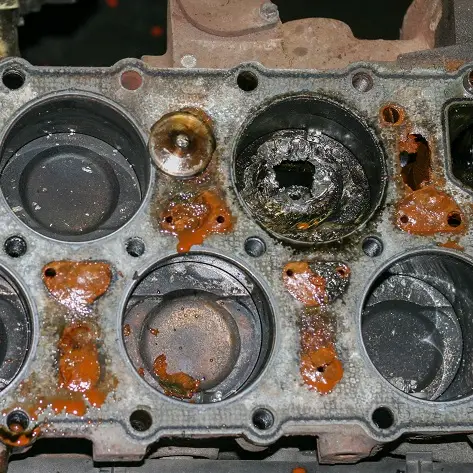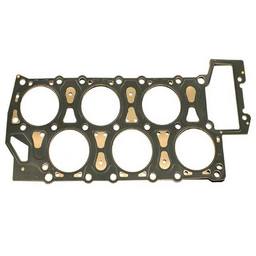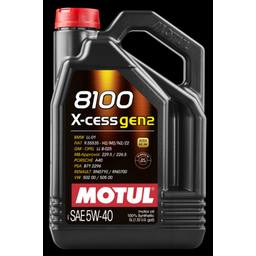The VW VR6 engine has long captured the hearts of automotive enthusiasts with its unique V-shaped design and impressive performance capabilities. Renowned for its power and smoothness, the VR6 engine has found its home in various Volkswagen models, earning a special place in the hearts of car aficionados. However, like any intricate piece of machinery, understanding the common issues associated with the VW VR6 engine is crucial for maintaining its reliability and ensuring a long lifespan.
As an owner or admirer of a VW VR6-equipped vehicle, being well-versed in potential problems can make a significant difference in how you approach maintenance and care. Among the issues that we’ve discussed in previous parts of the VW VR6 engine series, one issue stands out for its impact on engine health — head gasket failure. In this guide, we’ll talk about the common issue of head gasket failure, its causes, symptoms, diagnosis, and preventive measures. Lets get started!

Common Causes of Head Gasket Failure in VW VR6 Engines
The head gasket, often an unassuming component, plays a crucial role in the seamless operation of an engine. In the case of the VW VR6 engine, several factors can contribute to head gasket failure. By understanding these causes, you can take proactive steps to minimize the risk and ensure the longevity of your engine.
Thermal Stress
The VR6 engine’s innovative V-shaped configuration, while offering numerous benefits, can also lead to increased thermal stress on the head gasket. This stress arises from the uneven distribution of heat across the cylinders, which can affect the gasket’s integrity over time. As the engine heats up during operation, the head gasket may experience fatigue and ultimately fail, leading to potentially costly repairs.
Overheating
Excessive heat is a common enemy of engine components, and the VR6 engine is no exception. Overheating can result from various factors, such as a malfunctioning water pump (an issue we wrote about), low coolant levels, or even aggressive driving in extreme conditions. When the engine temperature rises beyond normal limits, the head gasket may be subjected to intense heat that compromises its sealing properties, leading to leaks and potential failure.
Coolant Contamination
The coolant in your VR6 engine serves a vital role in regulating temperature and preventing overheating. However, if the coolant becomes contaminated due to a cracked radiator, a faulty water pump, or other issues, it can infiltrate the head gasket and erode its material. Coolant contamination weakens the gasket’s ability to maintain a secure seal, increasing the risk of failure.
Poor Maintenance
Neglecting routine maintenance tasks can have far-reaching consequences for your VR6 engine’s health, including the well-being of the head gasket. Inadequate maintenance, such as ignoring recommended service intervals, failing to replace worn-out components, or neglecting cooling system checks, can contribute to premature head gasket failure. Regular upkeep is essential for preventing minor issues from snowballing into major problems.
Reusing Old Head Bolts
All the causes we’ve mentioned above are nothing unique to the VR6. However, there is a head gasket failure cause that somewhat is — reusing old head bolts.
Head bolts are far from mere fasteners; they play a vital role in maintaining the seal between the engine block and cylinder head. When head gaskets are replaced, the bolts serve as essential components in securing these two critical engine elements together, ensuring proper compression and preventing the leakage of vital fluids, such as coolant and engine oil. The tension created by head bolts is what maintains the necessary clamping force between the engine components, thereby preserving the head gasket’s ability to create an airtight seal.
Unfortunately, a tendency to use old or low-quality head bolts can lead to disastrous consequences. Many aftermarket head bolts, termed “stretch bolts,” are designed to provide a clamping force by undergoing a controlled stretching upon torque application. While this concept is sound in theory, subpar manufacturing processes and inferior materials can undermine the effectiveness of these bolts over time.
If these bolts are of poor quality or are inadequately designed, they may continue to stretch beyond their intended limits. This overstretching can lead to deformation and loss of tension, ultimately jeopardizing the integrity of the head gasket seal. In severe cases, such as those observed in VR6 engines, the bolts can become so compromised that they can be rotated by hand, rendering them utterly ineffective in holding the cylinder head securely in place.
To prevent all of this from happening, it is imperative to that you use high-quality head bolts, preferably those sourced from the original equipment manufacturer (OEM) or reputable manufacturers known for producing reliable engine components. Investing in premium head bolts ensures that the tension required for an optimal head gasket seal is maintained, reducing the likelihood of failure and its associated consequences.
Symptoms of a Failing Head Gasket
A failing head gasket can lead to a cascade of problems within your VW VR6 engine, impacting its overall performance and potentially causing significant damage if left unaddressed. Recognizing the warning signs of head gasket failure is essential for timely intervention and preventing further complications. Here are some key symptoms to watch out for:
Coolant Leaks
One of the most evident signs of a failing head gasket is coolant leakage. If you notice puddles of coolant beneath your vehicle or a gradual decrease in coolant levels without an apparent external leak, it could indicate that the head gasket has developed a breach between the coolant passages and combustion chamber.
White Exhaust Smoke
Excessive white smoke emanating from the exhaust, especially when the engine is warm, is a clear indicator of coolant mixing with the combustion process. This occurs due to a compromised head gasket, allowing coolant to enter the cylinders and burn along with the fuel. The resulting white smoke is often accompanied by a sweet, pungent odor.
Overheating
A failing head gasket can disrupt the proper circulation of coolant, leading to engine overheating. If your temperature gauge consistently indicates higher-than-normal readings or you receive overheating warnings, it’s crucial to investigate the cause promptly, as head gasket failure may be contributing to the issue.
Loss of Engine Power
A failing head gasket can result in decreased engine compression, leading to a noticeable loss of power and performance. If your VW VR6 engine feels sluggish, struggles during acceleration, or lacks its usual responsiveness, it could be due to a failing head gasket affecting cylinder compression.
Milky Oil
Inspect your engine’s oil regularly for signs of contamination. If you observe a milky or frothy appearance on the dipstick or oil cap, it suggests coolant mixing with the oil due to a breached head gasket. This can significantly undermine lubrication and lead to engine damage if not addressed promptly.
Unexplained Misfires
Head gasket failure can disrupt the combustion process, leading to misfires in the engine. If you experience rough idling, uneven engine operation, or a noticeable increase in engine vibrations, a failing head gasket could be contributing to these issues.
Rapid Coolant Consumption
If you find yourself refilling the coolant reservoir frequently without any noticeable leaks, it could indicate a head gasket problem. The engine’s internal combustion process may be consuming coolant, leading to a drop in coolant levels.
Diagnosing and Addressing Head Gasket Issues

Diagnosing a failing head gasket in your VW VR6 engine requires a systematic approach. Timely and accurate diagnosis is essential to prevent further damage and minimize repair costs. Here’s an overview of the diagnostic process and the steps to address head gasket issues:
- Visual Inspection — A trained mechanic will begin by performing a visual inspection of the engine compartment, looking for signs of coolant leaks, oil contamination, and any visible damage to the head gasket or surrounding components. They will also assess the condition of the coolant and oil.
- Compression and Leak Down Tests — These tests involve measuring the compression levels in each cylinder and evaluating the percentage of pressure leakage. Significant variations in compression readings or excessive leakage can indicate a compromised head gasket.
- Coolant System Pressure Test — By pressurizing the coolant system, you can detect leaks that might not be immediately visible. If the pressure drops or there are signs of coolant leakage, it suggests a potential head gasket issue.
- Exhaust Gas Analysis — Analyzing the composition of exhaust gases can reveal abnormal levels of certain compounds, indicating coolant combustion and confirming a head gasket breach.
- Oil Analysis — A sample of the engine oil can be analyzed for the presence of coolant or other contaminants, providing further evidence of head gasket failure.
- Cylinder Head Inspection — In some cases, it may be necessary to remove the cylinder head for a closer inspection. This allows mechanics to assess the condition of the head gasket, cylinder head, and related components.
If a failing head gasket is confirmed, prompt action is crucial to prevent further engine damage. Depending on the severity of the issue and the engine’s overall condition, there are several approaches to addressing head gasket problems:
Gasket Replacement
If the head gasket is the only component affected, replace it with a new, high-quality gasket. The cylinder head and engine block surfaces may need machining to ensure a proper seal. Make sure to use new head bolts of good quality, as well.
Engine Inspection
In cases where the head gasket failure has caused significant damage to the engine, a more comprehensive inspection may be necessary. This could involve assessing the cylinder head, pistons, valves, and other components for potential repairs or replacements.
Preventive Measures
After addressing the immediate issue, it’s crucial to identify and rectify the root causes of the head gasket failure. This may involve repairing the cooling system, addressing overheating concerns, and adopting better maintenance practices.
Preventive Measures to Avoid Head Gasket Failure
While head gasket failure can be a daunting issue, there are several preventive measures you can take to minimize the risk and ensure the longevity of your VW VR6 engine. By adopting proactive maintenance practices and staying attentive to your vehicle’s needs, you can significantly reduce the chances of encountering head gasket-related problems. Here are some essential preventive measures to consider:
Regular Cooling System Maintenance
The cooling system plays a vital role in preventing engine overheating and head gasket failure. Maintain proper coolant levels, regularly inspect hoses and connections for leaks, and ensure the radiator and cooling fans are functioning effectively.
Follow Recommended Service Intervals
Adhere to the manufacturer’s recommended maintenance schedule for your VW VR6 engine. Regular oil changes, coolant flushes, and other routine services can help prevent issues that could lead to head gasket failure.
Use High-Quality Coolant and Oil
Using high-quality coolant and engine oil can help maintain proper lubrication, temperature regulation, and overall engine health. Consult your vehicle’s manual for the recommended specifications.
Address Leaks Immediately
Any signs of coolant or oil leaks should be addressed immediately. Ignoring leaks can lead to fluid loss, overheating, and eventually head gasket failure.
Engine Warm-Up and Cool-Down
Allow your engine to warm up gently after starting, and avoid shutting off the engine abruptly after strenuous driving. Allowing the engine to cool down gradually can help prevent thermal stress on the head gasket.
Fix Your VW VR6 With Quality Parts
In the world of automotive engineering, the VW VR6 engine stands as a testament to innovation and performance. The head gasket issue, as troublesome as it is, doesn’t take anything away from this. That said, if you’re dealing with a worn head gasket, it’s imperative that you take care of it quickly using high-quality VW parts. Here at eEuroparts.com, we know quality parts. Our catalog is full of VR6 components made by some of the best names in the business. Head over to our store, select your vehicle and get parts that are a guaranteed fit for your car!





